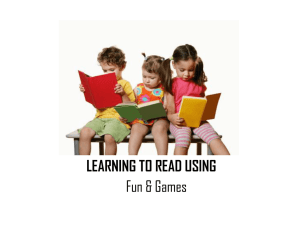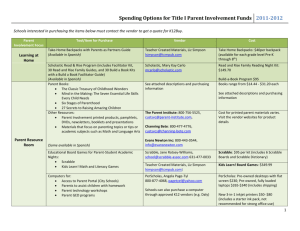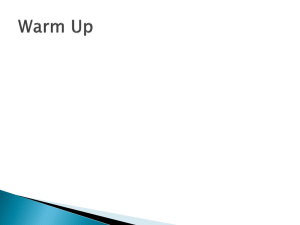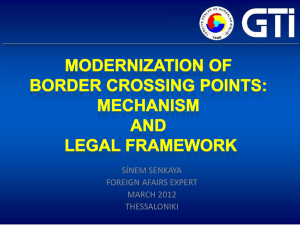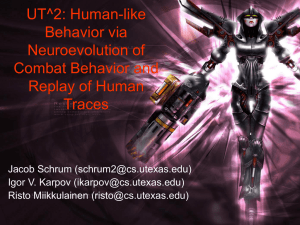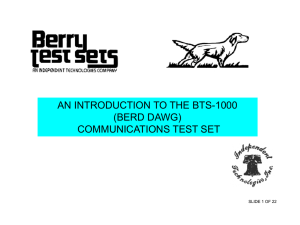Document
advertisement
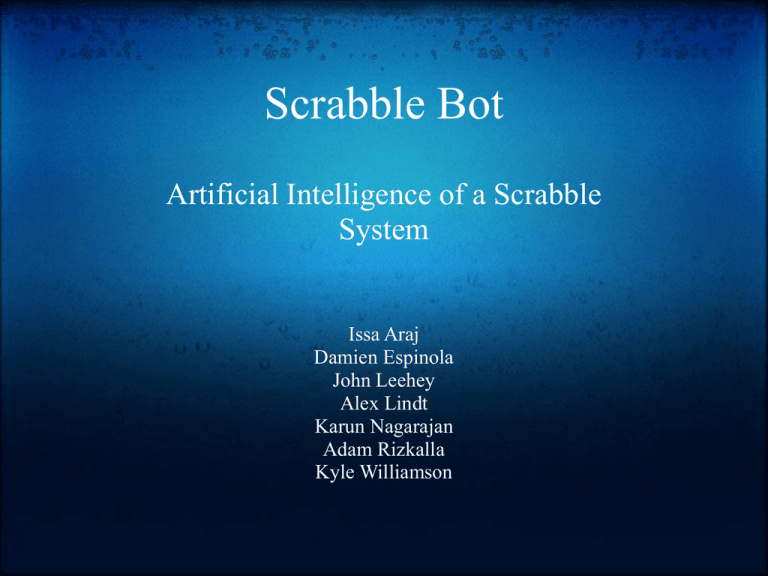
Scrabble Bot Artificial Intelligence of a Scrabble System Issa Araj Damien Espinola John Leehey Alex Lindt Karun Nagarajan Adam Rizkalla Kyle Williamson Task • Create a comprehensive Scrabble system for a human player to compete against an agent. • Produce an Artificial Intelligence System that can determine possible words from a list of letters • Develop an Open Source application easy for users to download and play What is Scrabble? • A trademark of Hasbro Inc. • The game is based on forming word combinations from the selection of tiles in a players hand • Each tile has a point value and a players score is based on the combination of letters a user plays and any additional score modifiers from the board • Acceptable words are validated by dictionaries designed explicitly for Scrabble Purpose Create a Scrabble agent to play against a human opponent • Must be able to determine a word in a reasonable amount of time o The bot will choose the best word point-wise with restrictions based on difficulty • Agent must follow rules of Scrabble o Word Choice o Take into account board layout & special tiles Purpose Graphical User Interface • Should be easy for a new player to learn and use • Playing should be intuitive • Aesthetically appealing Other Functionality • Easy for a user to download and install the game • All words referenced against official Scrabble dictionary for correctness Design : GUI > Interaction > Bot > RulesEngine • The GUI receives interaction from the user, and in turn probes the bot for moves. The Bot contains the AI, and uses base functions from the RulesEngine to determine the rules it must follow. RulesEngine • Contains the basic functions that determine whether a move follows the rules o Example: is [word] a valid word in the dictionary? o Example: what is the score of [word]? • Uses the SOWPODS standard scrabble dictionary Implementation Board • Graphical Structure o building GUI o Internal Representation of Board • Player o generation of a hand o finding the played word • Pass board to bot K Program Flow 1.Board appears / updates on screen 2.Player moves (places tiles on board) 3.GUI registers move 4.GUI class probes bot for next move 5.Bot calculates (using brute force) best possible move 6.Bot sends to GUI 7.GUI registers on screen 8.Repeat from step 2 (Player's turn to move) 9.If no more tiles or space, game ends Computer Bot Intelligence • • • • hecks occupied squares on the board C Finds various word combinations with given tiles Checks if moves are valid Ranks valid moves based on word length and score Improving the Algorithm • Two big options: DAWG or GADDAG. o DAWG: directed acyclic word graph o GADDAG: bi-directional acyclic word graph • Both offer trade offs for time and space • Each is significantly more powerful than brute force methods DAWG (Big D) • DAWG: each node can have a child node, or a next node. o child: an appended letter. o next: an alternate letter. • Pros: low space requirement, reasonably fast, eliminates invalid words from even being considered. • Cons: doesn't do well in multiple directions, treats prefixes differently than suffixes. GADDAG (Double D) • GADDAG: bi-directional acyclic word graph o Pros: (when optimized) extremely fast, eliminates invalid words from even being considered. o Cons: storing the optimized data structure is ~5x bigger than the DAWG. • Very similar in form to the DAWG, but treats prefixes and suffixes in the same way. • Increased performance allows more time to make better moves. General Improvements 1. Balance use of vowels, consonants, and letters required for larger moves. 2. Predict opponent's hands based on what's on the board. 3. Avoid moves that make large bonus tiles easy to reach. Demo Here is our presentation of Scrabble Bot!
